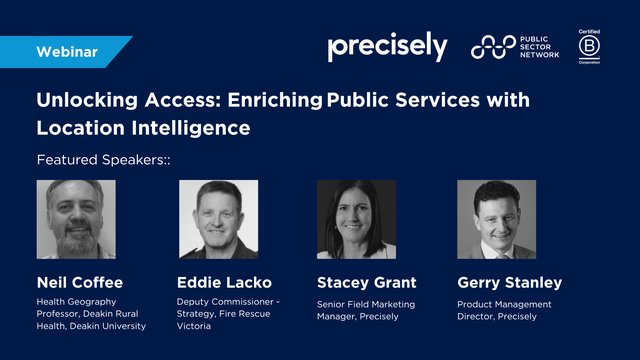

Identifying energy poverty as a smart city challenge
Most people, irrespective of where they live, want their lives to be enhanced by all of the technologies that are available, yet it is often the smaller and more regional places that seem to get overlooked. The Town of Bridgewater, on the south shore of Nova Scotia, was determined to not be left behind. Leon de Vreede, the Sustainability Planner within the Community Development Department of Town of Bridgewater, says that despite their meagre population of 8,600, for a decade or so they have been undertaking innovation related initiatives particularly in the field of energy and climate.
Although the focus of their activities has been on energy and climate, they took a traditional smart cities approach and created a very detailed roadmap for some of the key practices that our community is employing in this work. Once they decided to focus on the area of climate, the first part of the roadmap was to develop a deep definition of the problem area. The specific problem they decided to focus on was energy poverty, and through extensive community consultation in the form of surveys, focus groups and other types of data collection, they came to the conclusion that energy poverty is the inability to afford enough energy to heat and power one’s home or to have enough fuel for transportation. It is commonly measured that more than 10% of after-tax income is spent on energy, and for those who are not able to spend that money, this is an interconnected issue that has many ramifications for the quality of life of the residents in our community. In fact, data indicates that 38.5% of Bridgewater families struggle to afford enough energy, which is extremely debilitating. It is such an urgent crisis that the goal is to “lift all of our affected residents out of energy poverty, starting by reducing the energy poverty rate by 20% by 2025.
“Energy poverty is widespread regionally across Nova Scotia and around Atlantic Canada. We feel that the work we are doing in our community to combat it will build a path forward that may be able to be replicated in other communities as well.” - Leon de Vreede, Sustainability Planner, Community Development Department, Town of Bridgewater
Creating a new platform
Before being able to combat the issue though, it was first important to define the outcome that we hope to see in our community. The earlier consultation process led to the community discovering that energy poverty was being primarily facilitated by a set of structural issues in the community, including things like the increase of access to financial resources and home energy retrofits, as well as connected technologies. With these issues identified, we undertook detailed asset and partner mapping work. This identified a long list of partners and many community stakeholders who all combined to initiate the deployment of the technological and structural solutions.
It was discovered early on that many households were unable to pay their energy bills because their homes were not properly insulated or ventilated, and thus their bills were much higher than they needed to be. So some of the initial work was with our utilities and our housing sector partners to identify concrete ways to make deep energy retrofits available to ordinary residents. This included the installation of things like heat pumps, energy efficient windows, heat recovery ventilators, electric thermal storage, and hot water heaters. Installing these and other things in some houses led to the creation of the community-wide Energy Management Information System (EMIS), which is the core technology platform on which our solutions can be built. It connects buildings, whether they are residential or commercial, to an IoT-based sensor network that is connected to the cloud and enables advanced energy management solutions at a community scale. This is a data-driven, primary technology platform that our community identified a need for. However, before it could be fully deployed, it required some governance and policy development work.
From the outset, the goal was for everything to be replicable so in addition to being smart, we wanted our solutions to be open. Moreover, they needed to be safe and appropriate for the identified problems, so we decided that privacy and security rights needed to come before the technology fix. The Town Council also created an open smart community policy which ensures transparency and provides a guide for addressing potential future use of smart city technologies in municipal operations. The policy also identified things like accountability, resilience, a user-centric approach and other matters to ensure that safe technology deployment can take place.
On top of that, the Council also developed a privacy impact assessment, a neutral market assessment, and a threat and risk assessment, all of which are core requirements of open smart city best practice. Despite all this investment, research and policy creation, we see this as an iterative design approach through continuous learning to ensure that our community’s needs are being met throughout the process.
Lessons learned
The goal was to reduce energy poverty and this is being achieved because of community consultation and the deployment of smart city technologies. Along the way, the Town of Bridgewater has learned a number of pertinent lessons:
- Being a smart community simply means using data and connected technologies to solve difficult problems.
- Communities need to stay true to their desired outcomes, and to the principle of maximizing public good. Staying in touch with residents and community stakeholders helps to achieve that goal.
- It is extremely helpful to use solutions to connect with and enhance existing and emergency services. For instance, our energy management program for our municipal facilities is being enhanced through the deployment of EMIS.
- The private sector can provide incredible solutions, but only after outcomes and governance have been established in the community.
The Town of Bridgewater now wants to share our learnings as a smart community, so that the learnings from our journey can benefit other communities as well.
“After all, data-driven solutions are an opportunity for public institutions to not just ‘get with the times’, but to create transformational change for more sustainable, prosperous and equitable communities.” - Leon de Vreede, Sustainability Planner, Community Development Department, Town of Bridgewater































